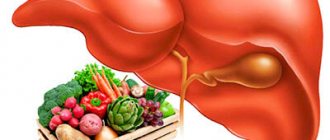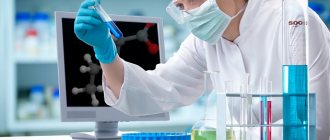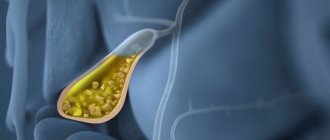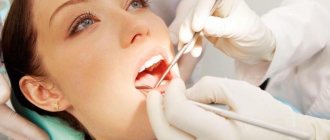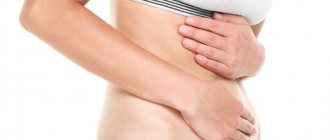Diseases of the gastrointestinal tract (GIT) are among the five most common diseases worldwide. Great mental and emotional stress, quick snacks of dry food, late visits to the doctor explain the frequency of gastritis. The well-known procedure of “swallowing a probe” causes a terrible fear in patients before the examination. In search of another alternative, many people wonder how to check the stomach without gastroscopy?
FGDS will help determine the cause of unpleasant symptoms associated with the gastrointestinal tract
Medicine does not stand still, and unpleasant invasive interventions are being replaced by other methods of diagnosing internal organs. Let's talk about them in detail in order of importance and frequency of use in doctors' practice.
How to check your stomach without swallowing a tube
The advantages of classic light bulb gastroscopy are the ability to take tissue for biopsy or cauterize bleeding throughout the gastrointestinal (GI) tract. For those patients who are afraid of undergoing the classical procedure because of negative reviews or have contraindications to it, an alternative to FGDS has been developed :
- capsule endoscopy;
- virtual colonoscopy;
- computed tomography of the gastric cavity;
- replacement with X-ray contrast examination;
- electrogastrography and electrogastroenterography (special devices are used).
Gastroscopy without swallowing the probe
A popular modern method is capsule gastroscopy or video pill. This is a less invasive way to examine the gastrointestinal tract, which conducts an examination and shows the results very accurately. What differs from gastroscopy with swallowing a probe is that it provides more information about the condition of the small intestine and the ability to detect diseases in the early stages. After such an examination of the digestive tract, a correct diagnosis can be made.
Instead of a conventional camera, biomarkers are built into the capsule, tuned to respond to specified substances. The body is examined more slowly. A research option is to swallow a capsule measuring 11*24 mm with a built-in sensitive video sensor. He takes several thousand frames, from which the doctor makes a conclusion about diseases.
Rapid test with baking soda
The desire to eat something sour, spicy or bitter (for example, lemon, chili or pickled cucumber) indicates low acidity of the digestive juice. Helps increase appetite: rye bread, apple juice, ketchup, spices and herbs.
The method allows you to identify catarrh with insufficient acidity. Dilute ¼ teaspoon of baking soda in 150 ml of water at room temperature and drink in the morning on an empty stomach.
If there is no belching within three minutes, there is a high probability that the acidity is reduced. If belching appears, then the concentration of gastric juice is normal.
Indications for gastroscopy
Like the classic FGS procedure, painless gastroscopy of the stomach without swallowing the probe is performed for the following indications:
- detailed study of the mucous membrane of the stomach, esophagus, duodenum;
- suspicion of tumor, bleeding, stomach ulcer;
- treatment of diseases of gastritis, duodenitis, esophagitis;
- clarification of the diagnosis of pathology for allergies, neuroses;
- detection of stomach acidity.
The procedure is also recommended if there are contraindications to conventional gastroscopy , such as:
- cardiac ischemia;
- hypertension;
- pronounced curvature of the spine;
- aortic aneurysm;
- a history of cerebral infarction or stroke;
- varicose veins of the esophagus;
- narrowing and ulcer of the esophagus;
- hemophilia;
- hemorrhagic diathesis;
- obesity;
- exhaustion;
- endemic goiter of the thyroid gland.
Advantages and disadvantages
Examination of the stomach using this method has advantages in the form of no need to swallow the tube (reduction of fears and panic attacks in patients before manipulation), high information content, elimination of discomfort and pain without anesthesia. The diagnostic procedure is suitable for those people for whom classical FGS with tube insertion is contraindicated. The disadvantages of capsule endoscopy include the following factors:
- the procedure is expensive;
- there is no possibility to collect material for a biopsy;
- it is impossible to specifically examine the pathology of the stomach walls;
- there is no possibility of carrying out therapeutic measures - removal in the presence of polyps, stopping gastric bleeding.
Physical methods
Any body check begins with a conversation between the doctor and the patient. The physical research method consists of several stages:
- collecting anamnesis for the presence of chronic pathologies and hereditary predisposition, identifying complaints from the patient;
- examination of the patient. The doctor evaluates the external condition, changes in the shade and structure of the skin and mucous membranes of the eyes. Pallor of the skin and exhaustion of the body indicate cancer, advanced stenosis, and lack of hemoglobin. With a grayish tint to the skin and anorexia, gastric ulcers, internal bleeding, and low hemoglobin are observed;
- examination of the oral cavity. With carious formations, they speak of infection of the body. In the absence of teeth and their increased fragility, problems with digestive function are observed. The doctor also evaluates the condition of the tongue. If it is clean but moist, then the peptic ulcer is in remission. A grayish coating and bad breath indicate acute gastritis;
- palpation of the abdomen. When the patient is severely malnourished, the contours of the organ are clearly defined. They can reveal pyloric stenosis, sluggish peristalsis, neoplasms on the mucous membrane;
- percussion. If it is necessary to determine the presence of noises in the stomach, the patient is asked to take a lying position, while raising his arms up.
Based on the results of the physical examination, the doctor can make a preliminary diagnosis. To further identify pathology, additional methods are prescribed based on the symptoms of the disease.
Contraindications
There are contraindications for performing gastroscopy without swallowing a flexible probe:
- impaired swallowing function (dysphagia);
- age up to 12 years;
- pregnancy;
- increased gag reflex;
- closing the lumen of the gastrointestinal tract (organ obstruction);
- the presence of a pacemaker and an implant powered by electricity, neurological electrical stimulators;
- intestinal obstruction due to the presence of a mechanical obstruction, impaired peristalsis;
- narrowing of the intestine due to fistulas and strictures (openings and closed spaces).
Preparation
Before undergoing capsule endoscopy, the patient must perform a number of actions to facilitate the procedure:
- within two days, start eating only liquid or solid food;
- do not consume cabbage, legumes, alcohol, milk, fresh baked goods, carbonated drinks;
- take medications that reduce flatulence 24 hours before;
- on the evening before the study, to cleanse the intestines, take the medicine “Fortrans” - from 16.00 to 20.00, drink a liter of suspension (one sachet per liter);
- stop eating food altogether within 12 hours;
- the procedure lasts 6-8 hours, the capsule is washed down with plain water, taken on an empty stomach;
- During the procedure, you can play sports, but do not make sudden movements or lift weights;
- After a certain time, which is prescribed by the doctor, the patient comes to the hospital to remove the capsule; this must be done naturally.
Important! A remedy for heartburn, gastritis and ulcers, which has helped a huge number of our readers. Read more >>>
A small number of instrumental techniques provide equally reliable information about the position of the organ, which is reflected by gastroscopy. Thanks to the discovery of optical fibers, it became possible to examine the gastric mucosa in real time and from different angles, take a biopsy sample for histological analysis, and carry out therapeutic manipulations. Gastroscopy is undoubtedly the most reliable assistant to a gastroenterologist; it is almost impossible to make a diagnosis without this study. But what to do if it is impossible to perform a classic gastroscopy due to the patient’s condition?
Main points
- Gastroscopy without swallowing the probe is possible, but it is not always justified to use other methods.
- FEGDS (FGS) is the best way to check the condition of the mucous membrane, and sometimes the submucosal membrane.
- Alternative methods do not make it possible to take a biopsy or perform a therapeutic procedure.
- Other diagnostics: radiography (usually with a barium suspension), ultrasound, CT, MRI, capsule endoscopy.
- If there is a suspicion of an oncological process or suspicion, FEGDS should be performed.
- Other methods complement endoscopy and cannot replace it.
What is gastroscopy of the stomach?
Gastroscopy is a very general name for an endoscopic examination that is used to examine the gastric mucosa.
Gastroscopy refers to methods of examining the gastrointestinal tract, and is often combined with studies of other organs, for example:
- Esophagoscopy - examination of the esophagus without going into the stomach;
- Esophagogastroscopy – examination of the stomach and esophagus;
- Esophagogastroduodenoscopy – examination of the stomach, esophagus and duodenum.
When is FEGDS better?
It is not always possible to find a complete alternative to gastroscopy - this is the basis. In other cases, on the contrary, it is inferior and complements other methods.
Stomach cancer
This term specifically refers to epithelial tumors, and the gastroscope approaches the epithelium itself. Exophytic cancer protrudes into the lumen of the stomach, and it is easier to take a biopsy from it; The endophytic tumor spreads in the submucosal layer and is not always visible from the mucous membrane. In the second case, auxiliary methods, for example, endoscopic ultrasound, will help.
In recent years, there has been an increase in the incidence of stomach cancer. The level is especially high on the Japanese islands compared to Europe.
Taking into account the possibility of taking a biopsy and direct visualization, and sometimes treatment, FEGDS (FGS) is necessary for stomach cancer.
Polyp
This is a benign epithelial neoplasm, which, however, requires removal as it can degenerate into cancer. Therefore, it is difficult to overestimate the role of FEGDS, with the help of which it is possible not only to identify all polyps, but also to remove them. They are also determined using x-rays.
Housing and communal services
Gastrointestinal bleeding is a situation where you need to quickly examine, find the source and eliminate it. In severe cases, the patient is immediately transferred to the operating room, and there he undergoes a gastroscopy.
If this is chronic bleeding, and the patient’s condition does not suffer so much, it is still necessary to do an esophagogastroduodenoscopy. It is not a fact that any other method will be able to determine the source of the pathology.
Bleeding, if detected by endoscopy, can be stopped directly with a probe.
Fibrogastroscopy
Fibrogastroscopy is the most common way to examine the gastric mucosa by inserting a fibrogastroscope into the organ cavity. This procedure is indicated for patients who are suspected of having gastritis, stomach ulcers, tumors, or polyps. Sometimes FGS is prescribed to identify possible causes of allergies or neuroses; the range of diseases is quite wide. Now the study is carried out in two versions of the probe: through the mouth and through the nose.
FGS with transoral administration
The procedure lasts only a few minutes, and the doctor can announce preliminary results immediately after the manipulation.
The patient is in a reclining position on his stomach, holding a special plastic mouthpiece in his mouth. The gastroenterologist endoscopist passes a probe through it and asks the patient to swallow the tube. Since light anesthesia was administered in advance, his gag reflex is weakened, and the patient does not feel the urge to gag, only discomfort and a sensation of a foreign body.
The advantages of this method include:
- short duration of the study (only 2-5 minutes);
- quick receipt of visual observation results;
- the ability to manipulate a video camera under eye control to study areas of particular interest;
- the possibility of carrying out therapeutic measures (biopsy, coagulation of bleeding vessels, removal of polyps);
- minimal risk of complications.
The disadvantages of fibrogastroscopy include:
- long period of preparation for the study, dietary restrictions;
- discomfort during gastroscopy;
- a large number of contraindications.
FGS with transnasal administration
This test is not yet widely used; transnasal testing means passing a flexible probe through the nose, along the back of the throat and down the esophagus. Since the fiberscope does not affect the root of the tongue and the uvula of the soft palate, the patient is not bothered by the gag reflex. The patient no longer requires local anesthesia or sedation. If there are allergic reactions to the anesthetic, this will be a separate point in favor of the transnasal method.
Obviously, the tube in this case will be much thinner than with fibrogastroscopy through the mouth. The diameter of the tube should not exceed half a centimeter, which means that the additional capabilities of gastroscopy will be significantly limited (you cannot take a biopsy through a thin channel, you cannot perform coagulation during bleeding). Such a tube is easier to insert, and the quality of the study itself does not deteriorate at all.
In addition, with the transnasal route of administration, the patient’s verbal functions are preserved; he can immediately report any unpleasant sensations to a specialist, which significantly reduces fear and anxiety before the procedure.
But, like any procedure, transnasal FGS has its drawbacks. Some patients report the appearance of nosebleeds after gastroscopy through the nose.
For fibrogastroscopy, regardless of the method of administration, there are a number of contraindications that reduce the versatility of the method. Relative contraindications are temporary; when reduced body functions are restored, they are removed, and FGS becomes possible. In addition, with the development of life-threatening conditions and the need for urgent gastroscopy, you can turn a blind eye to some of these indications. Such restrictions include:
- inflammatory diseases of the ENT organs;
- last trimester of pregnancy;
- burns of the esophagus and oral cavity;
- angina pectoris and advanced arterial hypertension.
Absolute contraindications limit gastroscopy indefinitely. In the presence of varicose veins, severe narrowing, scars of the esophagus, aortic aneurysm and curvature of the spine, FGS is strictly contraindicated.
Long-term manifestations of hypoacid gastritis
The inability to absorb proteins, minerals, and vitamins is the cause of vitamin deficiency, decreased immunity and the body's susceptibility to any disease.
Qatar with low acidity is the cause of the following manifestations:
- weight loss;
- apathy, weakness;
- brittle and peeling nails;
- dry, thinning skin and hair;
- acne;
- expanded vascular network on the cheeks and nose;
- low blood pressure;
- allergic reactions.
As the disease progresses, headaches appear after a violation of the diet (smoked foods, fried or fatty foods), appetite is reduced or absent, the patient is lethargic and apathetic, dizziness and increased heart rate are noted after eating.
Gastroscopy without swallowing the probe
This type of examination also includes transnasal fibrogastroscopy, in which a probe is passed through the nasal passages and descends into the stomach along the back wall of the pharynx. This is a gentle method intended for particularly sensitive patients exposed to stress. For example, in case of hypertension, inserting a fiberscope through the mouth can provoke a surge in pressure or even a hypertensive crisis. With transnasal FGS, these undesirable consequences can be avoided, since negative emotions from the manipulation are minimized.
Gastroscopy of the stomach without swallowing a probe becomes possible in its pure form thanks to capsule endoscopy. The patient is asked to swallow a small capsule, inside of which there is a built-in video camera and a video signal transmitter for it. There are different companies that produce capsules, they may have specific features, for example, there are capsules intended for the small or large intestine, for the stomach. Along with the capsule, the patient receives a signal receiver. Then, from this receiver, the doctor will take the data obtained during capsule endoscopy, but at this stage the patient can leave the hospital and return home. Later, the capsule will naturally leave the gastrointestinal tract, having previously captured the entire picture throughout the gastrointestinal tract. It is disposable and it is not necessary to control its output.
How to identify signs of an ulcer worsening
If the inflammatory process of a peptic ulcer is detected at the wrong time, it leads to negative consequences. Having the following information, it is possible to avoid complications by recognizing the signs yourself without instruments.
- Perforation – perforation of an ulcer. The resulting through hole in the wall of the stomach or duodenum releases the contents into the abdominal cavity. Subsequently it results in peritonitis (internal inflammation). Signs that are most often determined by: high temperature; increased clammy sweating; severe, cutting, but intermittent pain; cold extremities; strong thirst; the stomach is tense and sensitive.
- Penetration of an ulcer - the formation of a hole in the stomach, intestines with access to organs: pancreas, liver, large intestine and others. The presence of an exacerbation can be recognized by the onset of sharp, severe pain, a rise in high temperature, as the inflammatory process has begun in the abdominal cavity. Signs of pain are felt in the back, under the ribs, colic in the pelvis.
- Bleeding. Occurs when the ulcer enlarges and is corroded by acid. Symptoms depend on the amount of blood lost. It can be identified by bloody or black-colored stool. As blood loss increases, the person becomes worse and even loses consciousness. Pain occurs in the heart area, causing shortness of breath. The presence of bloody vomiting, low blood pressure, dizziness, nausea - evidence of internal bleeding.
- Stenosis is gastric obstruction. Occurs when an ulcer scars at the beginning of the duodenum or at the end of the stomach. As a result, the stomach is not completely emptied; the feeling of heaviness is constantly present, regardless of food intake. There is a smell of feces from the mouth, heartburn with sour belching and a strong bitter taste in the mouth.
Exacerbations of ulcers are treated surgically, excluding bleeding. Proper research and the ability to diagnose peptic ulcer disease at home makes it possible to stop the inflammatory process in time and save a person’s life.
It is impossible to accurately make the correct diagnosis without using ultrasound diagnostics with the help of ordinary knowledge. Basic information is obtained from a complete examination of the stomach (endoscopy, ultrasound), examination of the mucous membrane (biopsy) using special equipment, after visiting a gastroenterologist. In the future, tests and ultrasound examinations for stomach ulcers are indicated twice a year, preventing new inflammatory attacks.
Alternatives to the probe
If you cannot or do not want to experience discomfort and feel all the “delights” of FGS, then you can replace swallowing the probe with alternative solutions. How are stomach examinations performed without gastroscopy?
To do this, there are several most common methods used to study the gastrointestinal tract:
Your doctor will recommend what is best to choose and how to identify the disease. The patient has every right to refuse the probe. But is gastroscopy of the stomach possible without swallowing a probe of a sufficiently high level of effectiveness? We can safely say that there is something to replace the probe with. Each of the methods presented above has its own nuances and implementation features. Therefore, they should be considered in more detail.
Capsule gastroscopy
Medicine does not stand still. Gastroscopy of the stomach without swallowing the probe is now available. This unpleasant procedure was replaced by a capsule technique. This analogue does not cause discomfort, so you don’t have to worry about a possible gag reflex or other sensations.
How to check the stomach without gastroscopyif there is a capsule alternative? Let's study the features of this method:
- Capsule fibrogastroscopy is based on the fact that the patient swallows a special capsule. With its help, a specialist examines the internal state of the gastrointestinal tract.
- Virtual gastroscopy based on a capsule involves its gradual passage along the tract and taking pictures.
- To prevent the capsule from getting stuck, the patient is given plenty of fluids.
- Before the procedure, you should not eat any foods that cause bloating.
- The capsule technique makes it possible to study the current state of the intestines and stomach.
- The patient does not need to induce vomiting to remove the capsule. It comes out naturally, after which it is returned to the doctor to study the images.
- The main advantages of the capsule are convenience, effectiveness and the absence of the need to swallow a tube.
- At the same time, gastroscopy using a capsule has its disadvantages - high cost and the inability to carry out manipulations to eliminate detected problems.
The capsule is not a treatment tool. It is used only for examining the gastrointestinal tract and to obtain data regarding the current state of the stomach or intestines. So capsule gastroscopy is a good diagnostic tool, but treatment may still require a tube.
Gastropanel
Gastropanel is also classified as a modern method for examining the gastrointestinal tract. The main advantage is the absence of discomfort, which is highly appreciated by patients. Especially those who have personally experienced the probe:
- With the help of a gastropanel, a specialist can quickly detect problems and prescribe appropriate treatment.
- The technique is based on test , which reveals a broad picture of what is happening inside the body.
- The method is safe, comfortable, and results can be obtained quickly.
- The task of the gastropanel is to determine the possibility and necessity of gastroscopy or to find the optimal diagnostic method.
- Gastropanel is used if the patient complains of pain, discomfort in the abdominal area, belching and nausea.
- The gastropanel is used to examine patients for whom tube swallowing is contraindicated.
- Before the study, the patient must follow all preparation recommendations. They include avoidance of alcohol and minimal physical activity. You should also not eat foods new to the body, eat late or take medications. Immediately before the analysis, it is forbidden to eat, drink or smoke, since the procedure is carried out in the morning and always on an empty stomach.
- When blood is drawn from a vein, the patient is given concentrated soy protein to drink. After this, you need to wait 30 minutes and take a second test . The juice allows you to stimulate gastrointestinal .
Symptoms of chronic gastritis
Possible manifestations:
- pain in the solar plexus area, can be cramping, intense or nagging, moderate or mild, most often occurs on an empty stomach;
- a feeling of heaviness after a meal, a feeling of fullness in the stomach;
- belching of air and food, possible vomiting;
- decreased appetite;
- nasty taste on the tongue;
- bloating and unstable stool.
Be healthy!
Therapist Evgenia Anatolyevna Kuznetsova

